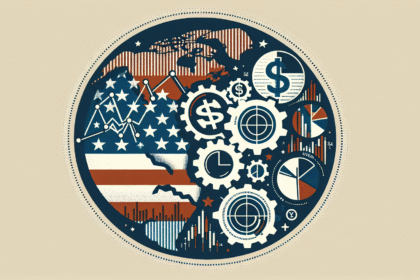ADP’s private payrolls report for May painted a pretty dour picture of the labor market as the first half of 2025 nears a close. How much that will be mirrored in Friday’s official nonfarm payrolls tally, though, is anybody’s guess. Unfortunately, ADP usually offers little predictive power for any individual month’s report from the Bureau of Labor Statistics. While the two track surprisingly close over longer periods of time, in the near term there’s virtually no correlation. Still, the May report from the payrolls processing firm showing just 37,000 net new hires jibes with other weakening labor market indicators that seem like a warning sign for a potential downside surprise from the BLS. “As we saw a month ago, the ADP payrolls number isn’t always a reliable predictor of the government’s monthly jobs data, but in the current environment, today’s downside surprise could raise more eyebrows than usual,” said Chris Larkin, head of trading and investing for E-Trade Morgan Stanley. Indeed, the respective April indicators for private payroll growth showed a wide disparity — 60,000 from ADP, 167,000 from BLS. That was the third consecutive month that the firm undershot the BLS figure. The trend, though, has been in the other direction. Over the past year, ADP has shown stronger growth than the BLS — 150,000 to 130,000. Further, the typical difference is less than one standard deviation, indicating that at least over the longer term, the two tallies tend to converge. There could, then, be at least a few lessons to learn from ADP heading into the big number Friday. The report found that businesses with fewer than 50 employees reported a loss of 13,000. Such apprehension to hire is consistent with fears from small companies that import a lot of their goods that they will be hurt by President Donald Trump’s tariffs . Small-cap stocks also have reflected such worries, with the Russell 2000 down nearly 6% year to date. .RUT YTD line Russell 2000 YTD “Just put yourself in the shoes of an employer and we can understand the hesitancy that so many business people have, especially small businesses that just don’t have the flexibility that larger companies have to adjust, nor the finances,” wrote Peter Boockvar, chief investment officer at Bleakley Financial Group. Economists, though, are unlikely to adjust the consensus estimate for 125,000 nonfarm payroll growth in the BLS report. Few Wall Street shops even offer written commentary after the ADP release, in contrast to its counterpart that draws opinions from virtually everyone. ADP does have a few fans. “ADP’s measure of private job growth is different from the official report that the Bureau of Labor Statistics will publish on Friday,” wrote Bill Adams, chief economist at Comerica. “But since ADP has real-time payroll data for over 25 million private workers, it’s a good preview of the official numbers.”





